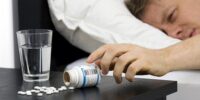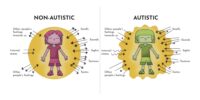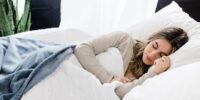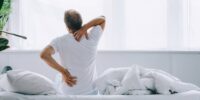How To Manage Sleep Apnea In Older Adults?
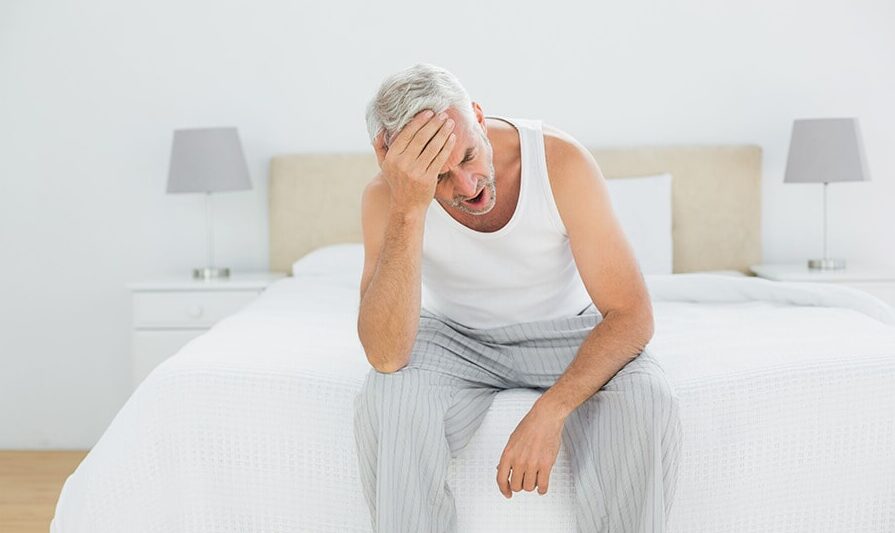
Sleep apnea is a common and potentially serious sleep disorder that affects older adults. It is characterized by pauses in breathing or shallow breaths during sleep, leading to disrupted sleep patterns and decreased oxygen levels in the body.
Managing sleep apnea in older adults requires a comprehensive approach that includes lifestyle changes, medical interventions, and the use of specialized devices.
Lifestyle changes may involve weight loss, regular exercise, and avoiding alcohol and sedatives.
Medical interventions may include continuous positive airway pressure (CPAP) therapy, oral appliances, or surgery.
Specialized devices such as CPAP machines can help keep the airway open during sleep.
It is important to consider coexisting health conditions, as sleep apnea is often associated with conditions like obesity, diabetes, and cardiovascular disease.
Aging itself can also contribute to sleep apnea.
This article will provide tips for better sleep quality and the importance of seeking professional help for managing sleep apnea in older adults.
Key Takeaways
- Sleep apnea is a common sleep disorder in older adults, affecting approximately 22% of this population.
- Aging itself can contribute to sleep apnea, and it is often associated with conditions like obesity, diabetes, and cardiovascular disease.
- CPAP therapy is the most common and effective treatment for sleep apnea, but other options such as BiPAP therapy, oral appliances, and surgery are also available.
- Managing sleep apnea in older adults requires a comprehensive approach including lifestyle modifications, regular follow-up with healthcare professionals, and addressing comorbid conditions that may worsen the symptoms.
Understanding Sleep Apnea in Older Adults
Understanding the prevalence and impact of sleep apnea in older adults is crucial for developing effective management strategies for this population.
Sleep apnea is a common sleep disorder characterized by recurrent episodes of partial or complete cessation of breathing during sleep. It affects approximately 22% of older adults, with the prevalence increasing with age.
Older adults with sleep apnea often experience excessive daytime sleepiness, cognitive impairment, and increased risk of cardiovascular diseases. The pathophysiology of sleep apnea in older adults may differ from that in younger individuals, with factors such as age-related changes in the upper airway and decreased ventilatory response to hypoxia playing a role.
Diagnosis of sleep apnea in older adults can be challenging due to comorbidities and the presence of other sleep disorders.
Management strategies for sleep apnea in older adults usually involve continuous positive airway pressure (CPAP) therapy, lifestyle modifications, and treatment of comorbidities. However, individualized management plans are necessary considering the unique characteristics and needs of older adults.
Lifestyle Changes for Managing Sleep Apnea
To effectively address sleep apnea in older individuals, implementing certain adjustments to daily routines and habits is crucial. Lifestyle changes can significantly improve the management of sleep apnea and promote better sleep quality. Here are some recommended modifications to consider:
- Maintain a consistent sleep schedule by going to bed and waking up at the same time every day.
- Create a sleep-friendly environment by keeping the bedroom dark, quiet, and cool.
- Avoid stimulating activities and substances close to bedtime, such as caffeine, nicotine, and heavy meals.
- Engage in regular exercise, as it can help reduce sleep apnea symptoms and improve overall health.
By incorporating these lifestyle changes, older adults with sleep apnea can enhance their sleep patterns and potentially experience a reduction in symptoms.
It is important to consult with a healthcare professional for personalized advice and guidance on managing sleep apnea.
Medical Interventions for Sleep Apnea
Medical interventions for sleep apnea encompass a range of treatments designed to alleviate symptoms and improve the overall quality of sleep.
Continuous Positive Airway Pressure (CPAP) therapy is the most common and effective treatment for sleep apnea. It involves wearing a mask over the nose or mouth during sleep, which delivers a continuous flow of air to keep the airway open.
Other medical interventions include Bi-level Positive Airway Pressure (BiPAP) therapy, which delivers two different levels of air pressure to help with breathing; oral appliances that help keep the airway open by repositioning the jaw; and surgery, which may involve removing excess tissue from the throat or repositioning the jaw.
Medical interventions are typically recommended for moderate to severe cases of sleep apnea, and the choice of treatment depends on the individual’s specific needs and preferences.
Regular monitoring and follow-up are important to ensure the effectiveness of the chosen intervention.
Using Specialized Devices for Sleep Apnea
This paragraph will discuss the use of specialized devices for managing sleep apnea in older adults.
Positional therapy is one such device that aims to keep the airway open by encouraging the individual to sleep in a specific position.
Mandibular advancement devices, on the other hand, work by bringing the lower jaw forward to prevent airway obstruction during sleep.
Lastly, adaptive servo-ventilation (ASV) is a device that uses positive airway pressure to treat both obstructive and central sleep apnea.
Positional Therapy
Positional therapy is an effective method for managing sleep apnea in older adults, as it involves encouraging individuals to sleep in positions that minimize airway obstruction. By maintaining a specific sleeping position, individuals can reduce the frequency and severity of apnea events during sleep. This therapy can be particularly beneficial for individuals whose sleep apnea is primarily caused by positional factors.
To evoke emotion in the audience, consider the following numeric list:
- Improved Quality of Sleep: Positional therapy can lead to a significant improvement in the quality of sleep for older adults with sleep apnea. By adopting specific sleeping positions, individuals can experience fewer interruptions in their sleep, leading to a more restful night’s rest.
- Enhanced Daytime Functioning: By managing sleep apnea through positional therapy, older adults can experience improved daytime functioning. This can result in increased energy levels, improved cognitive abilities, and overall better productivity throughout the day.
- Reduced Health Risks: Positional therapy can help reduce the health risks associated with untreated sleep apnea in older adults. By minimizing airway obstruction during sleep, individuals may experience a decrease in cardiovascular problems, such as high blood pressure and heart disease.
Positional therapy offers a promising approach to managing sleep apnea in older adults. By encouraging specific sleeping positions, this therapy can improve sleep quality, enhance daytime functioning, and reduce associated health risks.
Mandibular Advancement Devices
Mandibular advancement devices offer a potential solution for individuals seeking to address their sleep apnea symptoms without relying solely on medical interventions. These devices, also known as MADs, are oral appliances that are worn during sleep to reposition the jaw and tongue forward, thus opening the airway and reducing the occurrence of apnea episodes.
MADs work by advancing the lower jaw, which helps to increase the space behind the tongue and prevent its collapse during sleep. This mechanism promotes improved airflow and reduces the likelihood of obstructions.
MADs are considered a non-invasive treatment option for sleep apnea and are often recommended for individuals with mild to moderate obstructive sleep apnea. However, it is important to note that MADs may not be suitable for everyone and should be used under the guidance of a healthcare professional.
Adaptive Servo-Ventilation (ASV)
Adaptive Servo-Ventilation (ASV) is a treatment option that utilizes a sophisticated form of positive airway pressure to provide targeted respiratory support for individuals with sleep-disordered breathing. ASV is particularly beneficial for older adults with sleep apnea, as it can effectively manage their symptoms and improve their quality of life.
This therapy works by continuously monitoring a patient’s breathing patterns and adjusting the pressure delivered during inhalation and exhalation to ensure optimal ventilation. ASV machines are equipped with advanced algorithms that can detect and respond to variations in breathing, ensuring that the therapy is tailored to the individual’s specific needs.
Research studies have shown that ASV is effective in reducing the frequency of apnea episodes, improving sleep quality, and alleviating daytime symptoms such as excessive daytime sleepiness. Additionally, ASV has been found to have a positive impact on cardiovascular health, reducing the risk of cardiovascular events in older adults with sleep apnea.
Overall, ASV represents an important treatment option for managing sleep apnea in older adults, providing targeted respiratory support and improving their overall well-being.
Sleep Apnea and Coexisting Health Conditions
The presence of coexisting health conditions in older adults with sleep apnea significantly impacts the management and treatment approach for this population.
Older adults are more likely to have multiple chronic conditions, such as cardiovascular disease, obesity, diabetes, and hypertension, which can exacerbate the severity of sleep apnea. These comorbidities not only increase the risk of sleep apnea but also complicate its management.
For instance, individuals with both sleep apnea and cardiovascular disease may require additional interventions, such as continuous positive airway pressure (CPAP) therapy, to address both conditions simultaneously. Moreover, the presence of coexisting health conditions may necessitate a multidisciplinary approach, involving collaboration between sleep medicine specialists, cardiologists, endocrinologists, and other healthcare professionals.
This collaborative effort aims to optimize treatment strategies, improve patient outcomes, and enhance the overall quality of life for older adults with sleep apnea and coexisting health conditions.
Sleep Apnea and Aging
Sleep apnea is a common sleep disorder that affects people of all ages, but its prevalence increases with age. As individuals grow older, they may experience physiological changes that can contribute to the development or worsening of sleep apnea.
Older adults may have a higher likelihood of developing sleep apnea due to factors such as decreased muscle tone, increased weight, and changes in the structure of the upper airway. These factors can lead to frequent interruptions in breathing during sleep, resulting in poor sleep quality and potential health consequences.
Managing sleep apnea in older adults requires a comprehensive approach that includes lifestyle modifications, such as weight loss and regular exercise, as well as the use of continuous positive airway pressure (CPAP) therapy or other treatment options.
- Lifestyle modifications, such as weight loss and regular exercise, can help improve sleep apnea symptoms.
- Continuous positive airway pressure (CPAP) therapy is a common treatment option for older adults with sleep apnea.
- Regular follow-up with healthcare professionals is crucial to monitor the effectiveness of treatment and make necessary adjustments.
Tips for Better Sleep Quality
Improving sleep quality can be achieved by implementing certain strategies and lifestyle modifications. For older adults with sleep apnea, it is essential to create a conducive sleep environment. This can be achieved by maintaining a consistent sleep schedule and ensuring a quiet and dark room.
Avoiding stimulating activities, such as watching television or using electronic devices, before bedtime can also promote better sleep. Additionally, practicing relaxation techniques, such as deep breathing exercises or meditation, can help reduce stress and promote relaxation.
Engaging in regular physical activity during the day can also contribute to better sleep quality. Finally, managing comorbid conditions, such as obesity or nasal congestion, can significantly improve sleep apnea symptoms in older adults.
By implementing these strategies, older adults can enhance their sleep quality and manage their sleep apnea more effectively.
Seeking Professional Help for Sleep Apnea
Seeking professional assistance from a sleep specialist or healthcare provider can provide individuals with sleep apnea the expertise and guidance needed to effectively address their condition and improve their overall sleep quality.
Sleep apnea is a serious sleep disorder characterized by repeated pauses in breathing during sleep. It can lead to excessive daytime sleepiness, fatigue, and other health complications.
Sleep specialists are trained in diagnosing and treating sleep disorders, including sleep apnea. They may conduct a sleep study to monitor a patient’s sleep patterns and assess the severity of the condition.
Based on the results, they can recommend appropriate treatment options, such as continuous positive airway pressure (CPAP) therapy, oral appliances, or surgery.
Seeking professional help ensures that individuals receive personalized care and follow a comprehensive treatment plan tailored to their specific needs, ultimately improving their quality of life.
Frequently Asked Questions
Are there any alternative treatments or complementary therapies that can be used alongside medical interventions for sleep apnea in older adults?
Alternative treatments and complementary therapies can be used alongside medical interventions for sleep apnea in older adults. These may include continuous positive airway pressure (CPAP) machines, oral appliances, positional therapy, weight loss, and lifestyle modifications.
Can sleep apnea in older adults be completely cured with lifestyle changes alone?
No, sleep apnea in older adults cannot be completely cured with lifestyle changes alone. While lifestyle modifications can help improve symptoms, medical interventions such as continuous positive airway pressure (CPAP) therapy are often necessary for effective management.
Are there any specific exercises or activities that can help improve sleep quality for older adults with sleep apnea?
There is limited evidence to support the effectiveness of specific exercises or activities in improving sleep quality for older adults with sleep apnea. Further research is needed to determine their potential benefits.
What are the potential risks or complications associated with using specialized devices for sleep apnea in older adults?
Potential risks or complications associated with using specialized devices for sleep apnea in older adults include mask discomfort, skin irritation, claustrophobia, dry mouth, nasal congestion, and difficulty with exhalation. Further research is needed to fully understand these risks.
How does sleep apnea in older adults differ from sleep apnea in younger individuals, in terms of symptoms and treatment options?
Sleep apnea in older adults differs from younger individuals in terms of symptoms and treatment options. Older adults may experience more daytime sleepiness and fatigue, while younger individuals may have more pronounced snoring. Treatment options include continuous positive airway pressure (CPAP) therapy and lifestyle changes.


